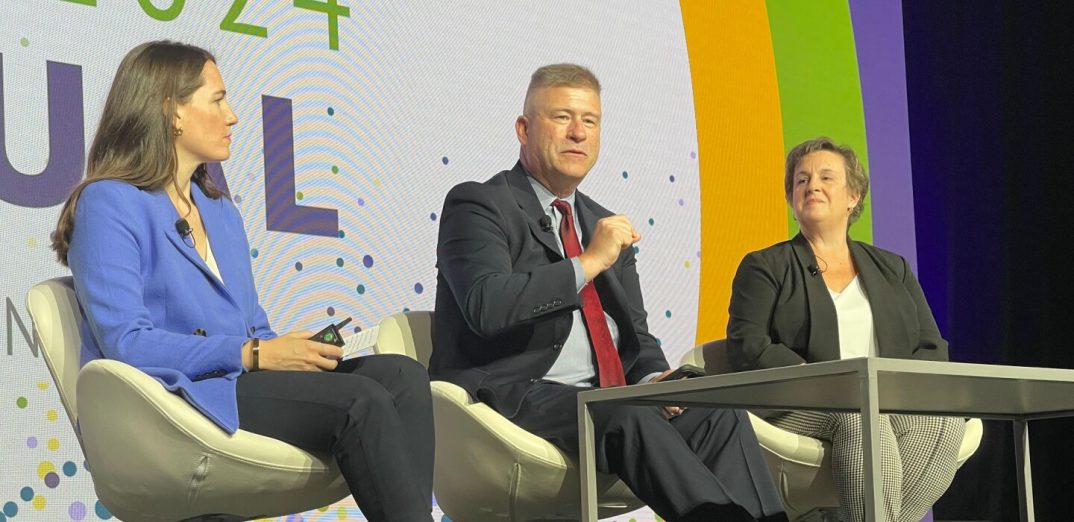NEW ORLEANS — As state governments look to harness the potential benefits of generative AI, it is perhaps better to have a full team leading the way, rather than a single chief AI officer.
This was one of the points made Monday at the National Association of Chief Information Officers 2024 (NASCIO) Annual Conference, the premier event for state government CIOs and IT leaders. And it was a point made by North Carolina CIO Jim Weaver, who is currently serving as NASCIO president.
“I see the chief AI officer as just another level of bureaucracy that’s going to add complexity and won’t drive a lot of value,” Weaver said.
State officials brainstormed some creative uses for generative AI at the event, with Weaver suggesting his team could use it for legislative code analysis, which means reviewing bills to discover when IT-related clauses are tucked into seemingly unrelated measures. Such provisions could otherwise easily escape the IT department’s notice, becoming a surprise later.
Chatbots are currently one of the most common state uses of generative AI, and Missouri Deputy CIO Paula Peters said that offering such solutions can be trickier than it seems.
“You have no choice but to use [GenAI] — everyone wants it. They think it’s as easy as turning on ChatGPT,” Peters said.
But for Missouri, setting up a chatbot on a public website first required indexing 1.5 million pages of documents from the site, before next training the bot and vetting its answers. One wrong answer can easily shake faith in this technology.
“A lot of times you get one opportunity to get this right, and then after that, people don’t trust what you’re delivering,” Weaver said.
States need to understand the full implications of AI on their budgets, too.
Beyond the initial purchase, states need to consider how much they’ll be spending long term to maintain their AI systems and solutions — and it can often be difficult to project what the per-month cost of AI use cases will be.
States also need to consider some less obvious costs, like how workloads might be affected by the rise of generative AI. For example, states already struggle to fulfill public records requests, and now AI can be used to quickly create more records requests, ramping up that strain and potentially necessitating more staff to handle it. Hypothetically, someone could deliberately try to overload a public records office with a slew of AI-generated requests, Weaver said. And employees’ use of generative AI productivity tools can create more kinds of public record content to deal with as well.
Plus, those looking to use generative AI on-premise rather than in the cloud must consider whether they can meet the technology’s tremendous demands for electricity without overpowering local power grids, as well as if they can provide water for cooling, Weaver said.
“Who has water in their data centers?” Weaver said. “We don’t.”
As for vendors who may wish to sell AI to government, Nebraska CIO Matt McCarville reminded in a separate panel that — no matter how good the sales price or discount is — government cannot afford to purchase an AI system if officials cannot see how it works. If the technology is going to be handling public data, the CIO needs to understand how the algorithm works, what biases could be in play and the potential rate of error.
Jule Pattison-Gordon is a senior staff writer for Government Technology. She previously wrote for PYMNTS and The Bay State Banner, and holds a B.A. in creative writing from Carnegie Mellon. She’s based outside Boston.
See More Stories by Jule Pattison-Gordon




